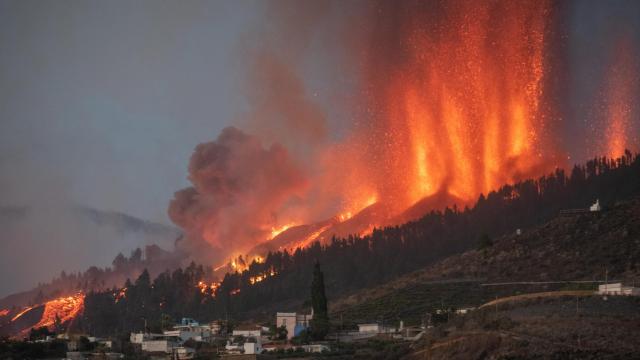A volcano on one of Spain’s Canary Islands erupted in spectacular fashion on Sunday, forcing some 5,000 residents and tourists to evacuate. No injuries have been reported.
The volcano, called Cumbre Vieja, sits on a ridge in the southern part of the island of La Palma, which is off the coast of northwest Africa. It’s erupted only twice before this century, first in 1949 and then again in 1971.
The current eruption is a surreal spectacle, as the volcano belched ash but day and then sent scarlet stream of lava pouring down its flanks under the black night sky on Sunday. The eruption has destroyed homes, though, swallowing them in curtains of scorching lava. Here are some of the wildest images from the explosion.
There Were Signs of an Eruption Beforehand
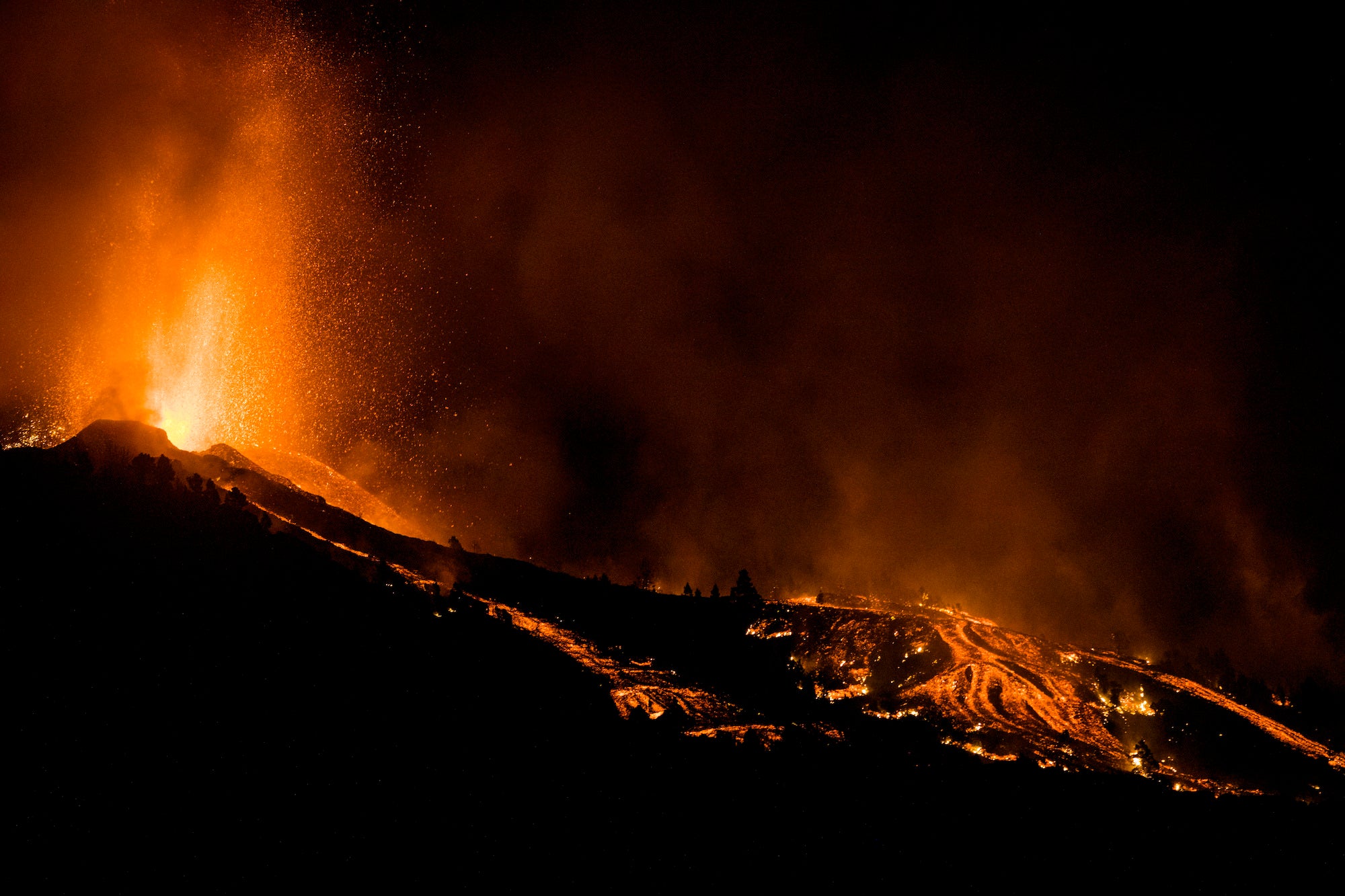
La Palma officials reported that the Cumbre Vieja began erupting around 3:30 p.m. local time on Sunday. But in the days before it began, it had shown signs of danger.
The Canary Islands Volcanology Institute, or Involcan, said it had recorded more than 20,000 earthquakes in the area over the previous week. That included more than 400 earthquakes in a single hour on Friday, a telltale sign that the volcano could be awakening. As the eruption began, the institute warned the public to stay far away and shut their windows and doors.
Authorities Had Time to Prepare
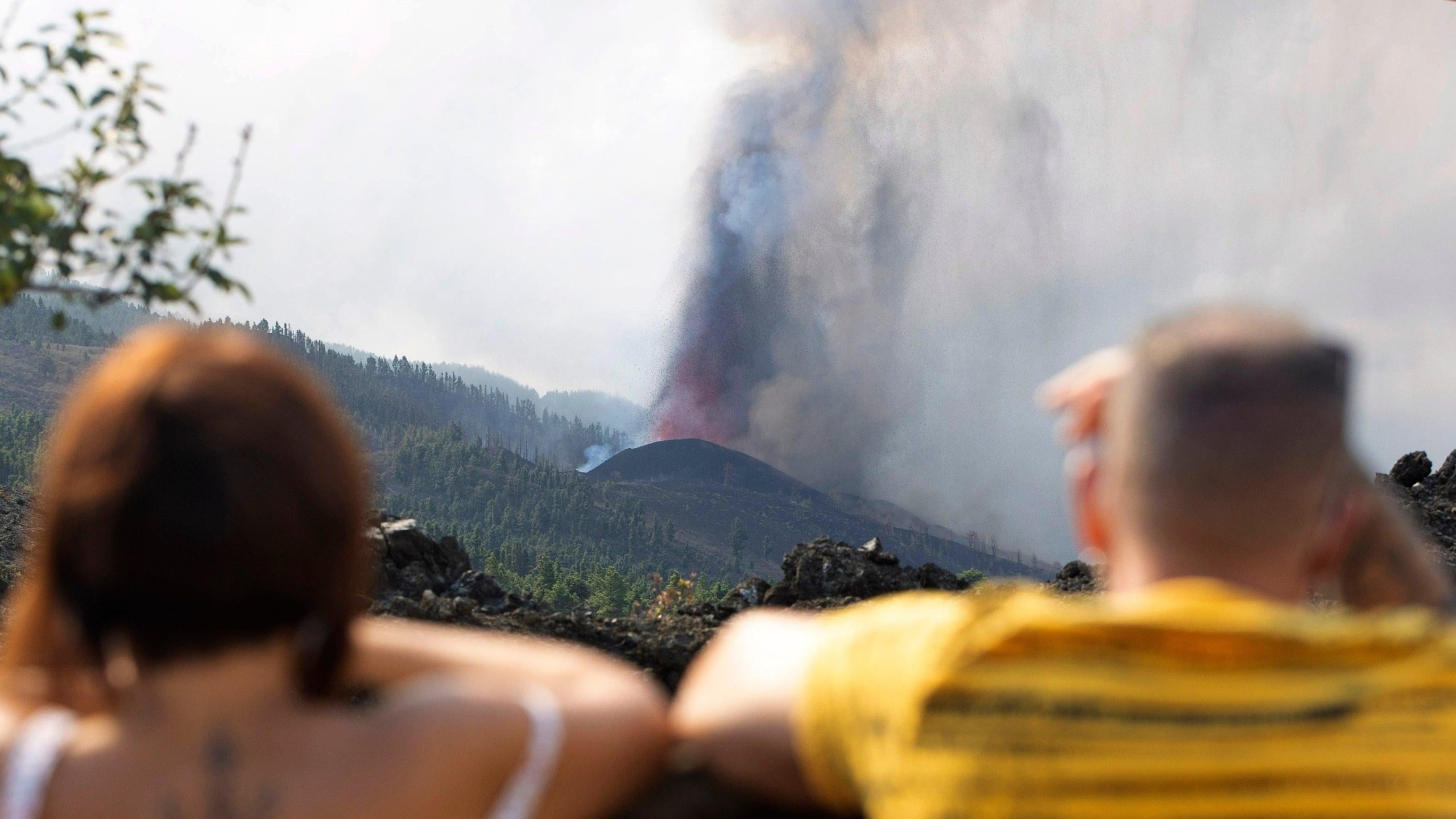
Because they’d observed all that seismic activity, authorities were prepared. Some people with health issues and disabilities were evacuated on Sunday before the eruption began. Officials also relocated farm animals from the region and shut down hiking trails.
Spanish Prime Minister Pedro Sánchez delayed a trip to New York for the United Nations General Assembly so that he could travel to La Palma.
The Volcanic Eruption Poses Local Risks
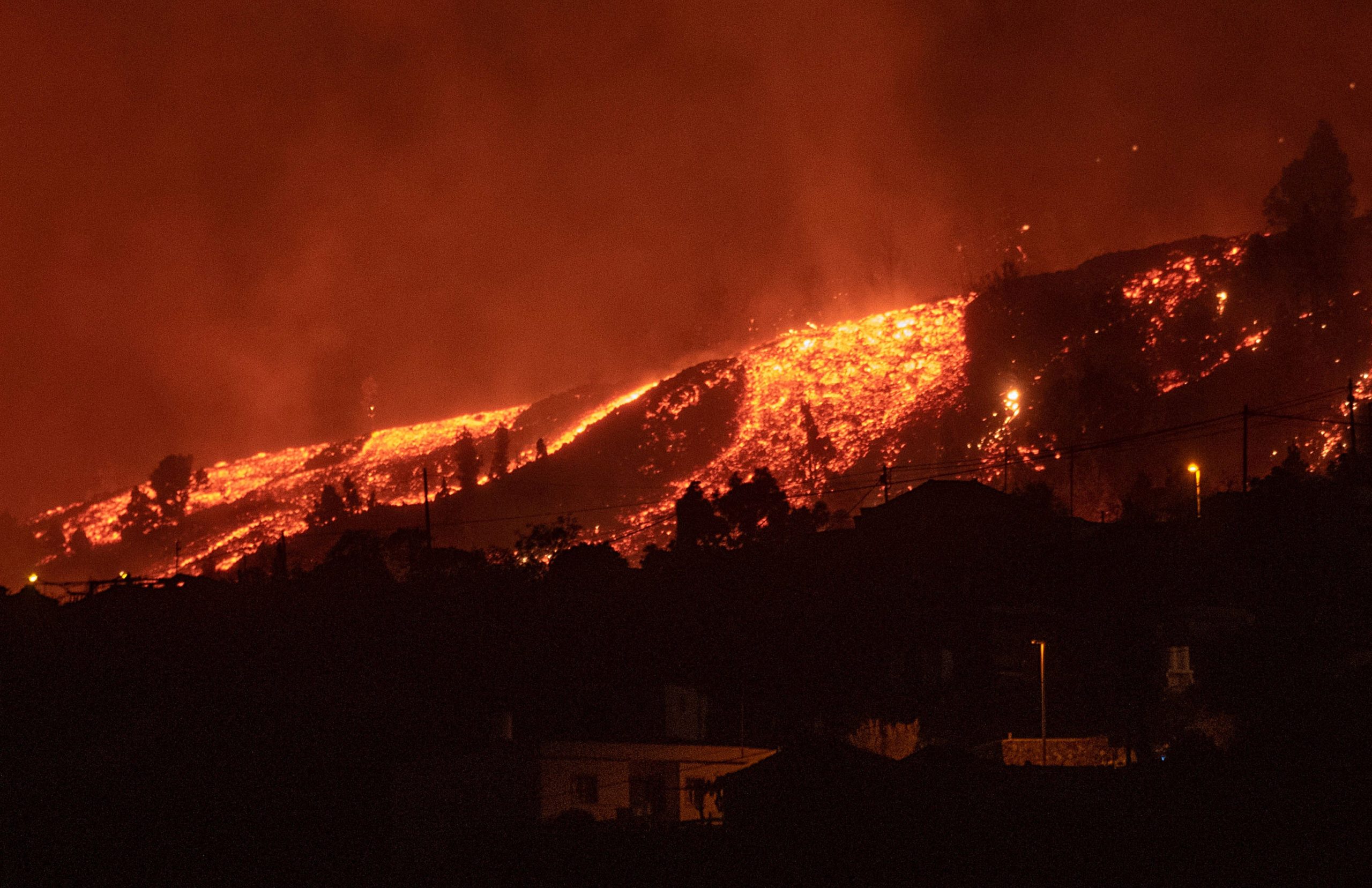
Just hours after the mass evacuations, Spain’s tourism minister Reyes Maroto called the eruption a “wonderful show” and said the islands were safe to visit. But for those on the ground, it’s a different story. Mariano Hernández Zapata, the island council president, told El Pais the eruption has been “devastating” and that the lava flows are “eating up the houses, infrastructure, and crops that it is finding on its path toward the coast in the valley of Aridane.”
At least 20 homes have been destroyed so far. Lava is moving at around 2,300 feet (700 meters) per hour, and though the flows are in sparsely populated areas, the risk for more destruction remains.
Scientific Observations Will Tell Us What Comes Next
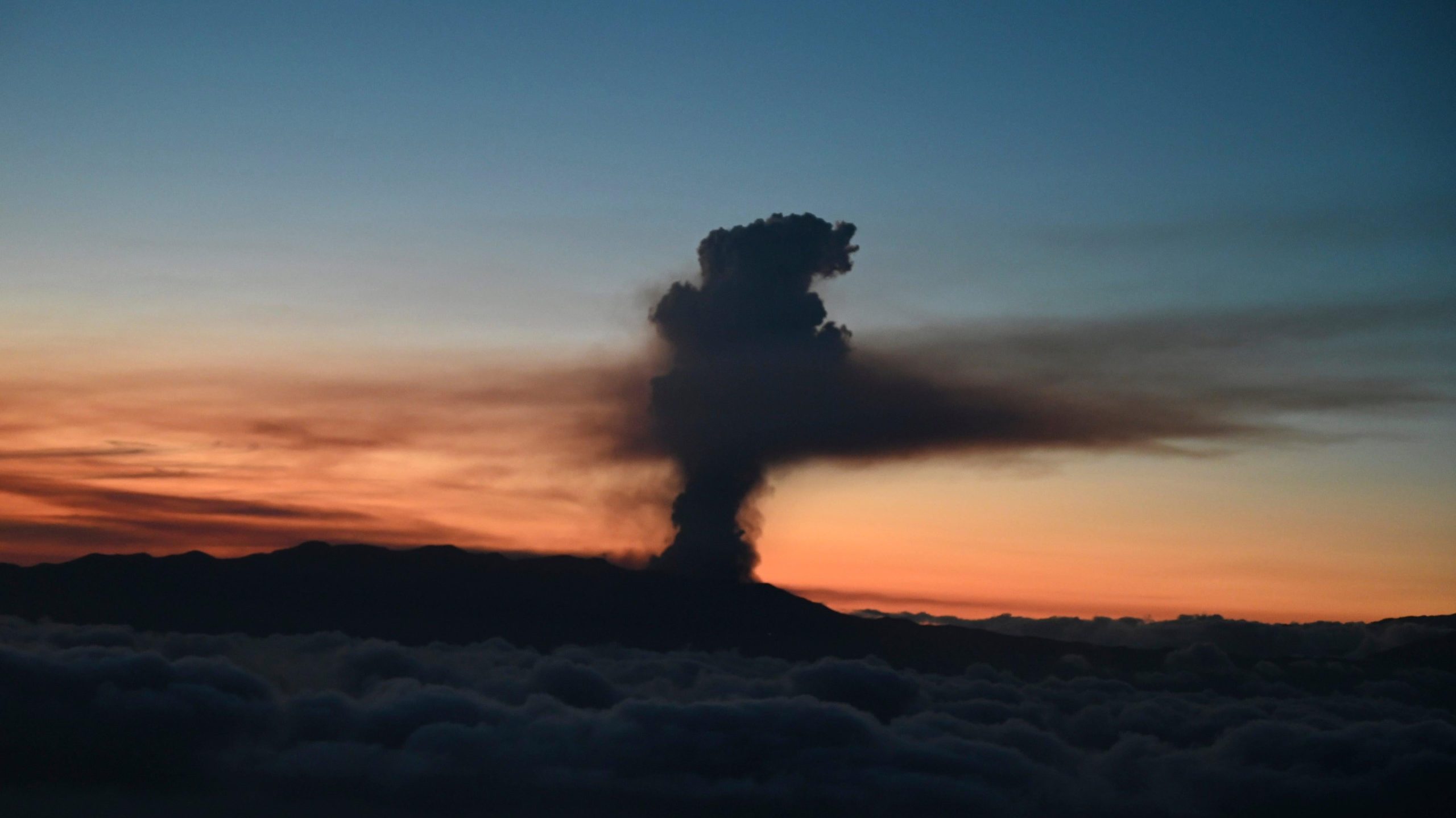
Officials at Involcan have been hard at work measuring all they can about the volcanic activity. On Sunday before the explosion, seismologists recorded tremors measuring up to 4.2 in magnitude. And early temperature measurements of the lava showed that it was 1,075 Celsius, hot enough to incinerate anything in its path.
The big question is how long the eruption will go on for. And on that front, it’s not clear. “It could suddenly stop, or persist for days, weeks or even months,” Robin George Andrews, volcanologist and writer, said on Twitter. “If so, expect a lot of lava flowing across the island’s south.”
Is A Landslide Cause for Concern?
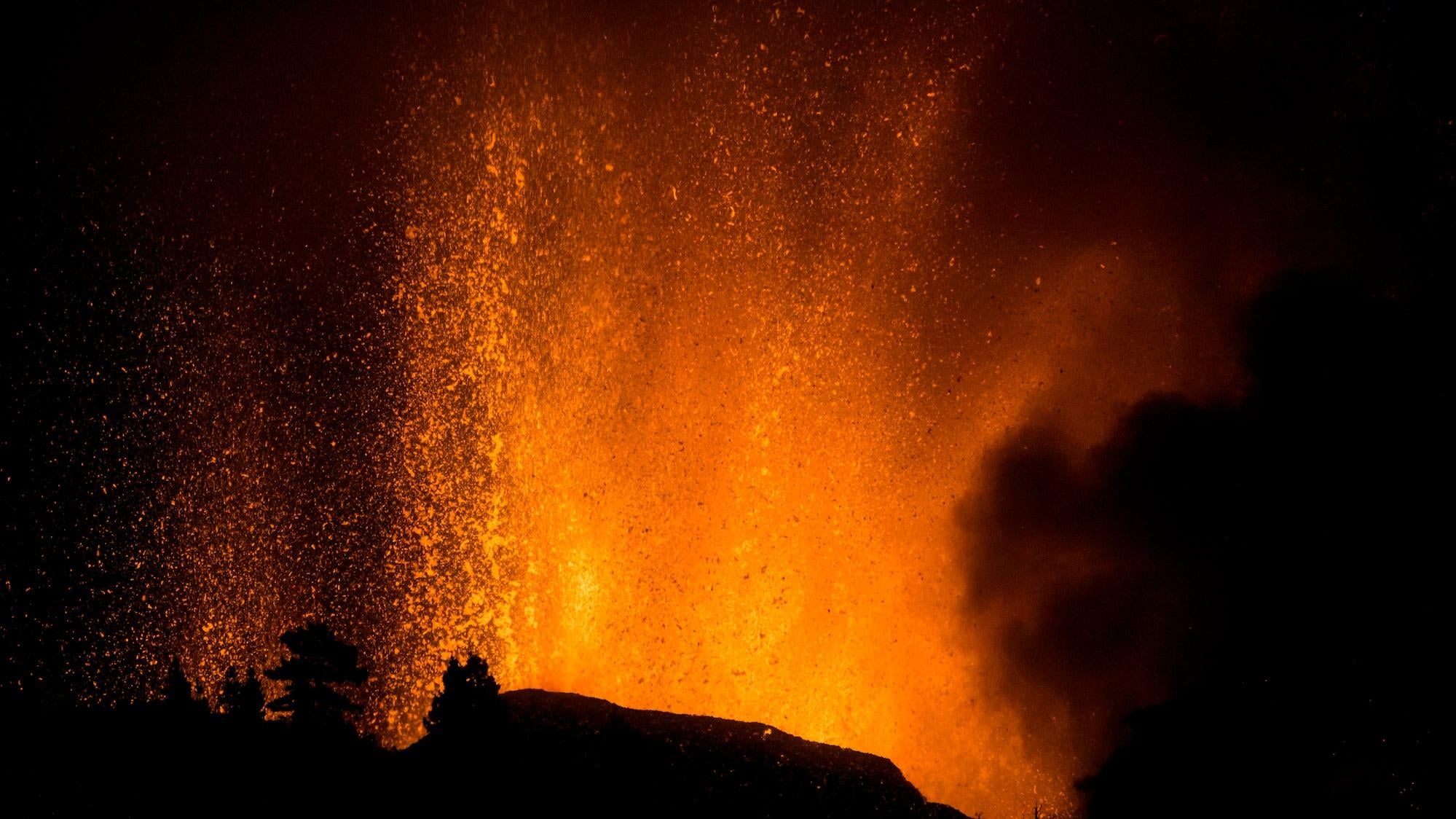
The eruption is certainly terrifying for those nearby. But should those of us further away be concerned? In the aftermath of the explosion, some began to voice concerns that the eruption could trigger a landslide and mega-tsunami in the Atlantic Ocean.
The worry is essentially that an eruption could cause the volcano’s flank to collapse, sending a landslide into the ocean that would generate a major tsunami that would course across the Atlantic and reach the Northeast with waves as high as 80 feet (25 meters). The scenario, which is based on a 2001 research paper, sounds like a disaster movie.
Horrific, right? But we can probably chill out about the risk at this point. More recent research shows that worst-case scenario is incredibly unlikely. Dave Petley, a geohazard expert, summarised much of that research in a series of 2017 blog posts for the American Geophysical Union. The findings, he wrote, show a landslide is possible but on the magnitude of the 2001 paper. Any tsunami “would be significant as it crossed the continental shelf off the east coast of North America, but would lose a great deal of energy due to frictional effects in this region,” ultimately resulting in a 2-metre tsunami.
The current eruption is unlikely to cause that to happen. As Andrews noted on Twitter, “you do not have to worry about an apocalyptic tsunami destroying New York City because of what’s happening on La Palma.”
